Today’s Current Affairs: 18th Jan 2024 for UPSC IAS exams, State PSC exams, SSC CGL, State SSC, RRB, Railways, Banking Exam & IBPS, etc
Table of Contents
Kolam Tribes:
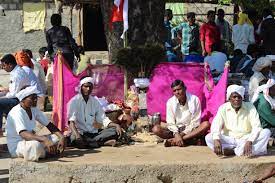
The Central government will extend basic facilities to the endangered Kolam tribe under the Jan Jati Adivasi Nyay Maha Abhiyan, with a focus on health and education.
- Kolam tribes, also known as Kolamboli, Kulme and Kolmi, occupy a major portion of Madhya Pradesh.
- The main concentration of this tribe is on the plains and in the mountainous region.
- These tribal groups are reckoned as scheduled tribes and apart from Madhya Pradesh they reside in some parts of Maharashtra and Andhra Pradesh.
- They are listed as Particularly Vulnerable Tribal Group (PVTG) in the state of Maharashtra and Andhra Pradesh.
- Around the twelfth century, the Kolam served as priests for the Gond, representing some of their important gods.
- It is generally accepted that the Kolam descended from the original population in the area.
- Since they now live near the Gond, they have adopted much of the Gond lifestyle.
Panama Canal:

Scientists recently stumbled upon a lost forest in the Panama Canal, dating back around 22 million years.
- Panama Canal is an artificial waterway that connects the Atlantic Ocean with the Pacific Ocean.
- The canal cuts across the Isthmus of Panama and is a conduit for maritime trade.
- It was cut through one of the narrowest saddles of the isthmus that joins North and South America.
- It is one of the two most strategic artificial waterways in the world, the other being the Suez Canal.
- It is approximately 80 kilometres long.
- It consists of a series of locks that raise and lower the water level to facilitate the passage of ships through the continental divide.
Paramyrothecium indicum : New Species Of Pathogenic Fungus
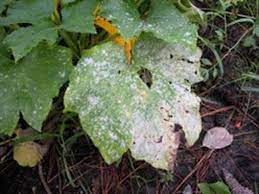
Scientists recently discovered a new species of fungus in Kerala, named ‘Paramyrothecium indicum’
- Paramyrothecium indicum is a new species of phytopathogenic fungus.
- Phytopathogens are parasites surviving on a plant host.
- Most of Paramyrothecium are phytopathogens.
- They are responsible for “serious plant diseases which might negatively affect crop productivity.
- Paramyrothecium leaf spots are a type of fungal disease that can affect a variety of plants.
- Some species of Paramyrothecium produce secondary metabolites with bio-herbicidal potentials and, therefore, may find application in controlling weeds.
Guru Gobind Singh:

Guru Gobind Singh Jayanti, or the Prakash Parv of the tenth Sikh Guru, is celebrated on January 17 this year.
- Guru Gobind Singh was the 10th and last human Guru of the Sikhs.
- Born as Gobind Rai on December 22, 1666, in Patna, Bihar, Guru Gobind Singh was the son of the ninth Guru of Sikhism, Guru Teg Bahadur.
- He became the spiritual and temporal leader of the Sikhs on November 11, 1675, at the age of nine, following the martyrdom of his father, Guru Tegh Bahadur, at the hands of the Mughal emperor Aurangzeb in 1675.
- He was renowned as a warrior, a poet, and a prophet.
- He is fondly remembered by Sikhs as a defender of the faith and a champion of equality and justice.
- Among his notable contributions to Sikhism are founding the Sikh warrior community called Khalsa in 1699.
- He introduced the Five Ks, the five articles of faith that Khalsa Sikhs wear at all times.
- These are Kesh: uncut hair, Kangha: a wooden comb, Kara: an iron or steel bracelet worn on the wrist, Kirpan: a sword, and Kacchera: short breeches.
- Throughout his life, he engaged in numerous battles against the Mughal Empire and their allies, totalling 21 battles.
- Some of the notable battles include the Battle of Bhangani, the Battle of Nadaun, the Battle of Anandpur, the Battle of Chamkaur, the Battle of Muktsar, and the Battle of Khidrana.
- Guru Gobind Singh proclaimed that he was the last of the personal Gurus.
- He was assassinated in 1708, at the age of 41.
African Dream Herb:
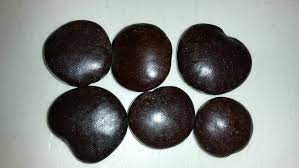
A dying traditional game, given a fresh lease of life at the ongoing Karbi Youth Festival (KYF) in central Assam’s Karbi Anglong district, has fuelled a drive for conserving a creeper known as the African dream herb.
- A perennial climbing vine that is used by African traditional healers to induce vivid dreams that enables them to communicate efficiently with their ancestors.
- Common names: Giant sea bean, African dream herb, snuff box and Entada rheedii
- It is indigenous to Africa, Asia, Australia and Madagascar. It grows in tropical lowlands, along the coastline and river banks, in woodland, thickets and riverine rain forests.
- A paste made from the leaves, bark and roots is used to clean wounds, treat burns and heal jaundice in children.
- Tea made from the whole plant is used to improve blood circulation to the brain and heal the after-effects of a stroke.
- The bark is used to treat diarrhoea, dysentery and parasitic infections.
- This creeper yields a dark brown and spherical seed, almost the size of a human patella or kneecap, used to play ‘Hambi Kepathu’.
- It is associated with the origin of the Karbi community.
e-SAKSHI Application:
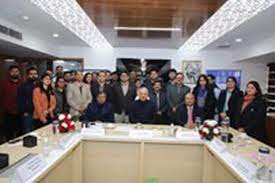
The Minister of State (Independent Charge) of the Ministry of Statistics and Programme Implementation (MoSPI) launched the MPLADS e-SAKSHI Mobile Application.
- e-SAKSHI Application was launched for revised fund flow procedure under Members of Parliament Local Area Development Scheme (MPLAD) Scheme.
- It will bring forth a myriad of benefits, revolutionising the way Members of Parliament engage with and manage development projects in their constituencies.
- It would offer convenience and accessibility, allowing MPs to propose, track, and oversee the projects at their fingertips.
- This real-time access enhances decision-making processes, enabling swift responses to emerging needs or issues.
- The application will streamline the communication between MPs and relevant authorities, facilitating a more efficient exchange of information.
- It will promote transparency by providing MPs with instant updates on the status and progress of their proposed projects.
- It has the features for budget management, ensuring MPs can monitor expenditures.
MPLAD Scheme:
- It was first introduced in 1993.
- The Scheme is fully funded by the Government of India under which funds are released in the form of grants-in-aid directly to the district authorities.
- The funds released under the Scheme are non-lapsable,e., the entitlement of funds not released in a particular year is carried forward to the subsequent years, subject to eligibility.
9th Edition Of The Pakke Paga Hornbill Festival:
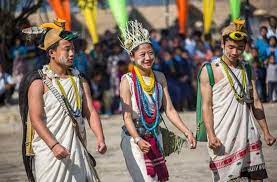
The 9th edition of the Pakke Paga Hornbill Festival (PPHF), a state festival of Arunachal Pradesh, will take place at Seijosa in the Pakke Kessang district from January 18-20, 2024.
- The first-ever PPHF was held in 2015. The aim was to recognise the role played by the Nyishi tribal group in conserving hornbills in Pakke Tiger Reserve (PTR).
- Other objectives were to raise alternative sources of income for the region and to create awareness in the rest of India about the wonders of PTR and its surrounding areas.
- This year, the festival’s theme is Domutoh Domutoh, Paga hum Domutoh. It translates to ‘Let Our Hornbills Remain’ in the Nyishi language.
- This year’s festival aims to underscore the critical need for preserving these iconic birds.
Pakke Tiger Reserve:
- It is located in the East Kameng district of Arunachal Pradesh.
- It is surrounded by the Tenga Reserve Forest to the North, Doimara Reserve Forest on the West, Nameri National Park and Tiger Reserve (Assam) on the South.
- The landscape has high species diversity and endemicity as it forms the transition zone between the Indian and Malayan ecoregions.
- It is situated North of the river Brahmaputra in the transition zone between the Assam plains and the hilly forests of Arunachal Pradesh.
Status Of Adivasi Livelihoods (SAL) Report, 2022:
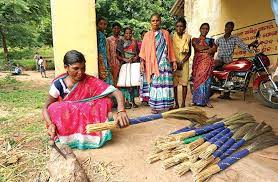
A report Status of Adivasi Livelihoods (SAL) Report, 2022, released by the non-profit organization PRADAN highlights that Food subsidy through Public Distribution System (PDS) has reduced the stress that Adivasi households would have faced due to lower income.
- The aim of this report is to understand the status of livelihoods of Scheduled Tribes from India’s central belt.
Key Highlights of the Report:
- The SAL Report, 2022 is based on a household survey covering a sample of 6,019 households.
- The report revealed that the average annual income for Adivasi households in Madhya Pradesh and in Chhattisgarh is much less than the national average annual income per agricultural household during the agricultural year 2018-19.
- In Chhattisgarh, the food and other items consumed by an Adivasi household in a year have a market price of almost Rs 18,000.
- Only around 13% of this amount is spent by households to procure those goods.
- The remaining 87% of the amount, is the subsidy given by the government.
- An Adivasi household in Madhya Pradesh procures goods from PDS worth Rs 10,000 market price annually, spending only 22% of the amount to procure them.
- In Madhya Pradesh, 32% of Adivasi households, 27 % of non-Adivasi households, and 61% of Particularly Vulnerable Tribal Groups (PVTGs) households reported being severely food insecure.
- In Chhattisgarh, 27% of Adivasi households, 42% of non-Adivasi households, and 29% of PVTG households reported being severely food insecure.
- The areas of Madhya Pradesh’s west, dominated by the Bhil community (which overlaps into neighboring Rajasthan, Gujarat and Maharashtra), had the highest average household income among both Adivasi and non-Adivasi households.
- It was 1.5 times higher than other regions of the state.
- Adivasi women enjoy more autonomy than their non-Adivasi counterparts.
- But the workload of doing household chores and livelihood activities is mostly borne by Adivasi women.
- Gender discrimination remains alive in decision-making practices and also customary practices.
58th All India Conference Of Director Generals/Inspector Generals Of Police:
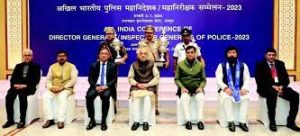
The Prime Minister of India attended the 58th All India Conference of Director Generals/Inspector Generals of Police in Jaipur, Rajasthan.
- It was a three-day being held in hybrid mode with DGPs (Director general of police), IGPs (Inspector-General of Police) and Chiefs of Central Police Organisations.
- A wide range of policing and internal security issues including Cyber Crime, Technology in Policing, Counter Terrorism challenges, Left Wing Extremism, and Prison Reforms were discussed at the conference.
- Another key agenda of the conference is deliberations on the road map for implementation of the new Criminal Laws.
Highlights of the PM’s Address:
- The PM emphasized the significant shift brought about by the enactment of new criminal laws, advocating for a justice system focused on citizen dignity, rights, and justice first, moving away from punitive measures to data-driven approaches.
- He highlighted the importance of sensitizing women and girls about their rights under the new laws, urging the police to ensure their safety and freedom to work fearlessly anytime, anywhere.
- He stressed the need to enhance the positive perception of the police among citizens, suggesting the use of social media at the grassroots level to disseminate positive information and messages.
- He advocated for organizing sports events as a means to strengthen the bond between citizens and the police force.
- He also encouraged government officials to stay in border villages to establish better connections with the local populace.
- He encouraged the Indian police to evolve into a modern, world-class force in alignment with India’s rising global profile, aiming to contribute to the vision of a developed India by 2047.
Punganur cows : Unique Dwarf Breed

Prime Minister Narendra Modi fed Punganur cows at his residence on Makar Sankranti. Punganur is a unique dwarf breed native to Andhra Pradesh, considered the shortest-humped cattle globally.
- The Punganur cow is native to Punganur village in Andhra Pradesh’s Chittoor district.
- It is known for its small size, standing at 70-90 cm tall and weighing approximately 115-200 kg.
- The breed is adapted to hot and dry climates.
- Recognizing the importance of preserving this indigenous breed, the Andhra Pradesh government has initiated “Mission Punganur” to revive and conserve the Punganur cow.
- Punganur cows are now found not only in Andhra Pradesh but also in Telangana, Karnataka, Kerala, Maharashtra, and Tamil Nadu.
Assam’s Mukhyamantri Mahila Udyamita Abhiyaan:

The Assam government introduced the Mukhyamantri Mahila Udyamita Abhiyaan (MMUA), a financial support scheme aimed at empowering rural women entrepreneurs.
- This initiative carries unique conditions, particularly focusing on the number of children women can have to qualify for the benefits.
- The MMUA scheme is designed to foster the development of rural women who are part of self-help groups, transforming them into “rural micro-entrepreneurs” with a target annual income of Rs 1 lakh per member.
- General and OBC women: Limited to three children to qualify for the scheme.
- STs and SCs: Allowed up to four children to avail benefits.
- Moran, Motok, and ‘Tea Tribes’: Subject to a four-child cap.
- In addition to child limitations, beneficiaries must fulfil two other conditions:
- If beneficiaries have girl children, they must be enrolled in school.
- For non-school-going age girls, a signed undertaking for future enrollment is required.
- Beneficiaries must ensure that trees planted under the government’s tree plantation drive, Amrit Brikshya Andolan, are surviving.
Pinaka Weapon System:

According to defence officials, two South American countries have shown interest in the Pinaka multi-barrel rocket launchers.
- Pinaka is a Multi-Barrel Rocket Launcher (MBRL).
- The Pinaka MBRL is designed by the Armament Research and Development Establishment (ARDE), a laboratory of the DRDO.
- It was first used during the Kargil War, where it successfully neutralised Pakistan Army positions on the mountain tops.
- It delivers lethal and responsive fire against a variety of area targets, such as exposed enemy troops, armoured and soft-skin vehicles, communication centres, air terminal complexes, and fuel and ammunition dumps.
- It consists of a multi-tube launcher vehicle, a replenishment-cum-loader vehicle, a replenishment vehicle, and a command post vehicle.
- The launcher system is supported on four hydraulically actuated outriggers at the time of firing.
- It has a range of 60 to 75 kilometres.




